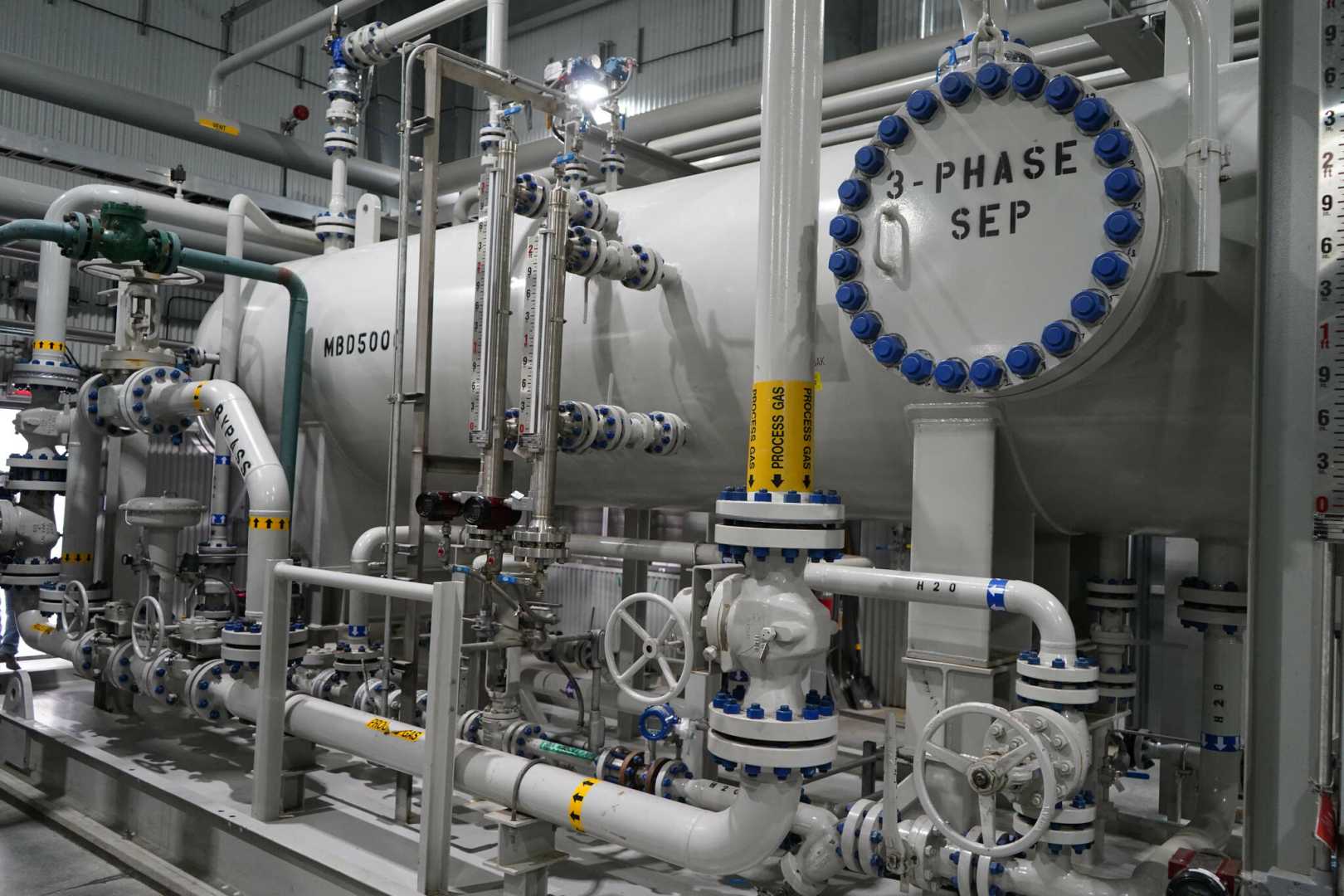News
Alaska Gas Facility to Import Gas as Early as 2026

Nikiski, Alaska – Harvest Alaska, an affiliate of Hilcorp Alaska, announced Thursday that it plans to acquire and convert a shuttered natural gas export facility in Nikiski to begin receiving imported gas. The imported gas could start being received at the Kenai Peninsula facility as early as 2026, with full-scale operation starting in 2028, according to Harvest Alaska.
Chugach Electric Association — the state’s largest electric utility — said it is in talks for the potential purchase of imported gas from the plant. Southcentral Alaska utilities and cities are scrambling to plan for an anticipated shortfall of gas from Cook Inlet, which has supplied the region for decades. Railbelt utilities have gas contracts with Hilcorp expiring in the coming years. Hilcorp, the region’s largest gas producer, has stated it cannot meet upcoming demand beyond those contracts based on production from the Inlet.
Last year, Chugach Electric said that imported gas could see a price premium of up to 50%. Under the proposal announced Thursday, the other four Railbelt utilities could secure gas supplies from the plant. “By repurposing Marathon’s existing LNG facility, we aim to provide certainty to the Southcentral gas market while meeting the needs of Railbelt utilities,” Harvest CEO Jason Rebrook said in a prepared statement.
The LNG plant operated for over 40 years and shut down in 2017. Marathon Petroleum purchased the plant from ConocoPhillips Alaska in 2018. Marathon has plans to convert the facility in the future so that it could accept imports of LNG, or liquefied natural gas.
Enstar — Southcentral Alaska’s natural gas utility — last month filed an application with state regulators for construction of an imported gas facility. The utility stated that it had signed an exclusivity agreement with Glenfarne, a New York-based company, to advance those plans.
Both of the plants are proposed for construction in Nikiski on the Kenai Peninsula. It’s unclear whether Southcentral Alaska will end up with two gas import facilities in the end, or just one, or none at all. The two projects are both in the early phases.
Chugach Electric Association does not see the Harvest and Enstar projects as competing endeavors, said Julie Hasquet, a spokesperson with the utility. Chugach Electric needs new supplies of gas by March 2028, she said. That’s when the utility’s gas supply agreement with Hilcorp, its primary gas supplier, comes to an end. “This is the first project that’s come to us that can bring us gas in 2028, so we see it as a near-term solution,” she said.
Other projects on the table would not make gas available until later, she said. Southcentral Alaska utilities have worked together over the past three years, studying different projects together and individually, Hasquet said. “We have different needs,” she said. “We have different timelines.”
The demands for natural gas are vastly different between an electric company that can supplement its gas with renewable power, and a natural gas company that requires all gas, she said. “But we’re at a point now where nobody has brought a project forward that meets Chugach’s timeline until this one,” she said.
Sutton Republican Rep. George Rauscher, who serves on the House Energy Committee, welcomed the dueling import proposals from Enstar and Harvest Alaska. “I think it’s good for Alaska. Competition is always good,” he said Thursday.
Separately, Enstar and Hilcorp are in a recently filed case over the amount of gas Hilcorp should provide for Enstar for storage. Enstar’s gas supply contract with Hilcorp ends in 2033. Enstar has presented a proposal to the Regulatory Commission of Alaska for its effort with Glenfarne. That project would begin importing gas into Alaska in 2029, according to the proposal.
John Sims, president of Enstar, said the timeline for first gas is a conservative estimate. “There’s still a lot of work that needs to be done to determine the actual start date,” he said. Sims said the natural gas utility is working in the coming months with Glenfarne to determine if its project will advance. It can easily be estimated that it will cost more than $100 million to build the project, he said. Efforts to study the project before a final investment decision can be made are expected to cost millions. Sims said Thursday morning that Enstar had just learned of the proposal involving Harvest Alaska. Enstar is pursuing a project designed to meet the gas supply needs for utilities in the region, said Lindsay Hobson, an Enstar spokesperson.
Enstar and the electric utilities consume about 60 billion cubic feet annually. Enstar uses most of that gas, more than 35 billion cubic feet annually. Larry Persily, an oil and gas analyst and former Alaska deputy commissioner of revenue, said the Harvest Alaska proposal would benefit from permits granted in 2020 for converting the former export facility into an import operation. The decision from the Federal Energy Regulatory Commission approves about 2.5 billion cubic feet of gas imports annually, he said. Persily said that amount might be enough to close any potential gas shortage in the region early on, since some gas production in Cook Inlet is expected to continue. The approved volumes for that plan can be expanded with approval from the federal commission, he said.












